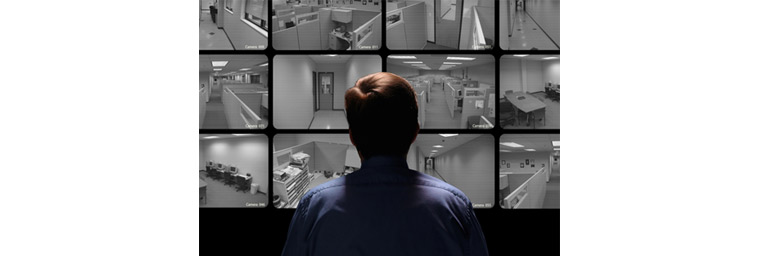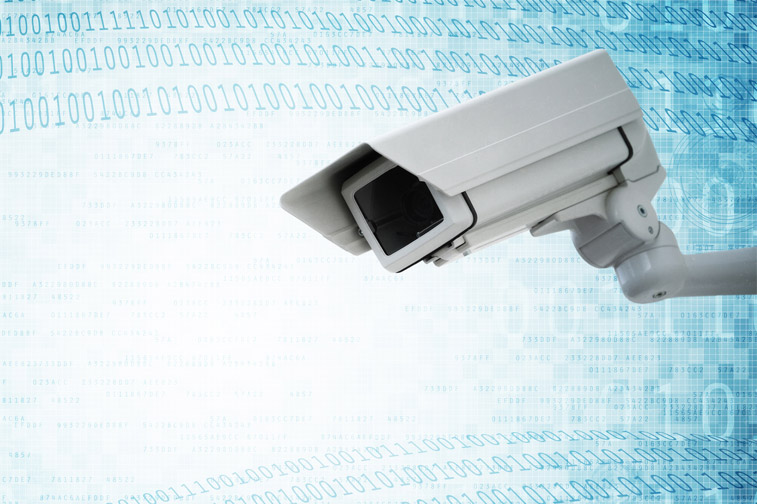![[Big Data Series] Chapter 4. Reading Tredns with Big Data, Use Cases of Big Data Analysis for Video](https://image.samsungsds.com/en/insights/pic_top.jpg?queryString=20230710031911)
Recently, the amount of images and video data from CCTVs, smartphones, black boxes, drones, satellites etc. has been significantly increasing. The size of this data is both huge and asymmetrical, collecting data has been all the more difficult as it comes in real time.
Accordingly, big data technology is definitely required to analyze a video data.
Many researches are ongoing in earnest these days to show a video data visually and extract a meaningful information by utilizing a big data analysis. The big data of video analysis is useful in detecting crime and danger, particularly, the analysis of specific person and pattern of objects is widely used in marketing and other fields. In this way, big data in video is widely used.
Video is being used to analyze a specific person as well as finding patterns of behaviors to enhance marketing activities. Big data is also being used for preventing and detecting crime as well as improving public safety. Let’s take a closer look at the use cases of video big data in Korea and abroad, and its implications.
CCTV Video Analysis for Crime and Security
You can easily find CCTV not only in public places, but also inside buildings. As such, the number of CCTV installed is constantly growing, attempts to apply CCTV video data to crime and public safety began several years ago.
The development of big data technology enabling the analysis of massive volumes of video data. The Korean Defense Ministry and overseas organizations developing systems to apply big data to predict crisis levels in dangerous areas.
 Use of CCTV Video Analysis in Crime and Security
Use of CCTV Video Analysis in Crime and Security
In the terrible Boston Marathon Bombings in April, 2013, video data from CCTVs nearby was collected to analyze, thus identifying suspects successfully.
The FBI collected and analyzed ten terabytes CCTV videos and photos/video clips taken by cellphones nearby the marathon venue to identify the suspects. It had been difficult to distinguish thousands of people and to find the movement flow of suspects through CCTV video.
This data was analyzed by utilizing big data, in conjunction with eye witness accounts that led to the suspects being identified just a few hours later.
The Korean National Police Agency is operating ‘Crime Prediction System.’
The system was developed using big data, and criminal information is being collected and stored including criminals’ information, the time when crime happened, characteristics of the area where crime frequently happened.
About 40 factors to affect crime including people passing by the area, adult entertainment establishment, and the distance from police office as well as criminal information are analyzed, as a result, the likelihood of crime in a specific area is calculated.
This Crime Prediction System played a leading role in identifying the culprit of attacking a woman in Gwangju, 2014, thus preventing any further damage from happening. The prediction system came up with the result that the area is highly likely to see crime after analyzing many types of information, the police stepped up their efforts to patrol the area. Therefore, as soon as the incident had happened, police arrived right away and prevented any further damage.
 Crime Prevention with CCTV Monitoring System
Crime Prevention with CCTV Monitoring System
As such, many attempts are being made continuously to collect CCTV video data and to prevent crime in Korea. Another example is D-Net, a big data system with which the Korean Ministry of Defense announced this year to develop for collecting CCTV video and analyzing them in real time to detect danger.
The system collects CCTV video or video taken by air flight to recognize the faces of people and car numbers. Also, the system stores a massive data on a big data basis, collects and analyze data rapidly.
Deep learning will be deployed for analysis to improve the accuracy of recognizing and identifying an object. The system will be applied for the purposes of crime prevention and security as well as defense. By analyzing a video data, it can detect unusual symptoms, thus preventing any criminal activities.
 D-Net development for security by analyzing CCTV video
D-Net development for security by analyzing CCTV video
Use Case for Marketing Activity with Video Analysis
Recently, a service to send shopping information and coupons automatically to customers is gaining popularity, when an application of department stores or supermarkets is installed in customers’ mobile.
Therefore, department stores can locate their customers inside their store via the wireless frequency from customer’s smartphone. CCTV images from inside the store can also identify customer’s movement flow to show which section they visited and which goods they showed interest in.
Moreover, the analysis of CCTV video extracts automatically the profiles of general customers. For example, “40% Korean men in their 30’s visited the outdoor store A on the 2nd floor, 20% of them purchased, and 10% visited the store again.” Such an information is acquired from big data analysis.
As such, customer’s movement flow and profiles show customer’s pattern, which are useful for marketing activity. In other words, customers’ purchasing pattern in a specific time can be analyzed, which leads to a change in store’s environment and gives more information on shopping pattern, thus increasing company’s profit.
 CCTV Video Analyzes Customer Patterns
CCTV Video Analyzes Customer Patterns
Use for Ultrasound Video and CT/MRI Analysis
Errors in detecting disease are increasing recently, and its subsequent death is also growing every year.
In the previous Bio chapter, we introduced ‘IBM Watson’ computer, whose detection tools are being used for give objective and accurate decisions in the medical industry. Watson is also reducing detections error by using big data in analyzing CT and MRI videos.
In Korea, Samsung Medison recently developed ‘S-Detect’, an ultrasound detector, which is a system that detects breast cancer by using deep learning algorithm of ultrasound videos. In the past, a massive amount of diagnosis data was used to determine a positive reaction or malignant cancer depending on the type of tissue.
With the help of doctors, S-Detect has improved the accuracy of diagnosis in distinguishing a positive reaction and a malignant cancer. Moreover, S-Detect will help reduce medical costs, as unnecessary additional medical check becomes unnecessary.
 Samsung Medison’s S-Detect (From: Samsung Medison website)
Samsung Medison’s S-Detect (From: Samsung Medison website)
Closing
Analyzing technology has developed so that we can now leverage multimedia images, video, audio as well as text to create real value in many industries.
Video data analysis will be widely used for creating more revenues for businesses, as well as for preventing disaster and crime.
Accordingly, companies and national governments need to note that data transmission and storage with personal information needs to be dealt with caution, as concerns over privacy are growing in recent days.
Such multimedia data will be available significantly in the near future, however, corresponding infrastructure to cover them is in far short of. Now is the time to implement a suitable infrastructure to analyze and store data.
Next chapter will cover the use case of IoT big data.
▶ The contents are protected by copyrights laws and the copyrights are owned by the creator and Samsung SDS.
▶ Re-use or reproduction as well as commercial use of the contents without prior consent is strictly prohibited.

After receiving her Ph.D for industrial engineering from Gorgeia Tech in 2009, Dr. Seoyeon Kim worked as an industrial engineering researcher at the National University of Singapore before joining Samsung SDS in September 2010. As a data scientist, she leads multiple big data projects while also working as an instructor for an in-house data scientist training program she helped create. Dr. Kim regularly shares her in-depth big data expertise as a contributor for CommonSDS and IE magazine and also actively participates in various industry seminars.
